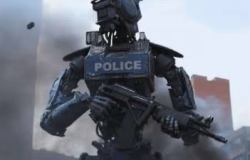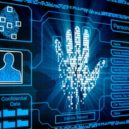ARTIFICIAL INTELLIGENCE IN POLICING

Back in 1818, when people even in their wildest imagination could never have conjured up computers and robots, Mary Shelley in her book “Dr Victor Frankenstein” prophesied artificial intelligence (AI) with her bizarre concoction of an artificially generated creature who could think as we do. Today we may have made Frankenstein’s Promethean dream a reality with AI.
AI today is transforming the world at such a breakneck speed that even experts are having trouble keeping pace with it. AI is a panoply of digital tools that enable machines to perceive, learn, and make decisions like humans.
But the worlds biggest brains, Stephen Hawking, Bill Gates, Elon Musk etc. have warned that once a sufficiently advanced AI gets created, it will rapidly advance to a point where it will replace humans.
AI has been generating enormous attention and trenchantly clashing opinions about its potential repercussions on humankind.
 1982, neo-noir sci-fi film, Blade Runner directed by Ridley Scott and starring Harrison Ford, coincidentally set in 2019 could be the single most influential film ever made about AI for correctly endeavouring to predict what life would resemble in 2019. The films ability to prognosticate the advent of AI within a precise time frame blew my mind away.
1982, neo-noir sci-fi film, Blade Runner directed by Ridley Scott and starring Harrison Ford, coincidentally set in 2019 could be the single most influential film ever made about AI for correctly endeavouring to predict what life would resemble in 2019. The films ability to prognosticate the advent of AI within a precise time frame blew my mind away.
In it, Harrison Ford, a cop who is assigned the task of eradicating humanoid robots, wonders if he’s one too. The films sweeping imagination about the scenarios in which AI could amalgamate with society—as an evildoer, as a protector, as some combination of the two, or perhaps just as a villain purporting to survive are facing us today as stark dilemmas.
Let me present here a scenario where AI played a combination of the two.
In a case of murder owing to unrequited love, data from an AI as simple as Apple’s Siri unravelled, that it had enacted the part of a digital conspirator by assisting its iPhone owner to dispose of the body of his friend slain by him. And, it also played the role of a witness by furnishing evidence against the owner of the iPhone which redounded on having Bravo charged for first-degree murder during the trial.
Bravo Pedro in 2012 was accused of drugging and strangling his friend Christian Aguilar because he too was crazy about Aguilar’s girlfriend Erika Friman, another University of Florida student who had previously dated Bravo. Aguilar went missing in September 2012. After an extensive, month-long volunteer search for the 18-year-old Aguilar, hunters in the nearby woods found his body, semi-buried.
An examination of images on Bravo’s iPhone revealed a Siri screen grab of the request made to Siri by Bravo to help him hide his roommate after the murder, to which Siri had replied, “Swamps, reservoirs, metal foundries and dumps.”
 Today, the use of AI and machine learning is slowly spreading into police work as police departments worldwide have begun to capitalise on the AI technology to fight, prevent, solve and predict crimes.
Today, the use of AI and machine learning is slowly spreading into police work as police departments worldwide have begun to capitalise on the AI technology to fight, prevent, solve and predict crimes.
Police Chief William Bratton first conceived the concept of Predictive policing for crime prevention at the Los Angeles Police Department (LAPD) in 2008. Though Tom Cruise needed human pre-cog mutants to predict crime in the 2054 dystopia of “Minority Report,” – data-driven algorithms are doing it today.
The tantalising prospect of predicting crime before it happens has probably got law enforcement agencies, most excited about AI. Predictive policing being data-driven uses data on the times, locations and nature of past crimes, to provide intuitive penetration to police strategists concerning where, and at what times, police patrols should patrol, or maintain a presence, to prevent and detect crimes.
Predictive policing programs are currently under use by police departments in several U.S. states such as California, Washington, South Carolina, Arizona, Tennessee, and Illinois. Predictive policing programs are also under implementation by Kent County Police in the UK, Netherlands and even by Suzhou Police Bureau in China.
India too has set out towards big data policing in a small way, but Tamil Nadu is yet to get into thick of it. Gurgaon based start-up called “Staqu” is using big data for identifying criminals and finding missing persons.
Staqu launched an AI-based human efface detection (ABHED) application for effective policing. The startup has integrated the app with the database of police of eight Indian states, including Rajasthan and Punjab for identifying criminals by facial recognition.
For law enforcement, IBM has built compelling AI which every police organisation under the sun would desire to own. IBM’s Crime Information Warehouse (CIW) which is in place at NYPD marries the concepts of crime analytics and predictive policing with video.
The CIW consolidates information about incidents, offences, arrests, and calls for service, allowing law enforcement officials to make more timely and informed decisions about crime fighting and force deployments. Which means real-time coordination of information, allowing officers and analysts to detect crime patterns as they are shaping, enabling precinct commanders to take proactive measures to stay ahead of these trends — and potentially prevent upsurges in criminal activity.
The Memphis Police Department (MPD) teamed up with IBM to improve crime-fighting techniques with IBM’s predictive analytics software and has reduced serious crime by more than 30 per cent, including a 15 per cent reduction in violent crimes since 2006.
Law enforcement departments and intelligence agencies are also using AI technology to monitor social media to help spot and identify radicalised individuals or illicit activity such as drug trafficking or gang activity.
With the increased use of various social media platforms such as Facebook, Instagram, Twitter or Tinder, criminals have new platforms to identify potential victims, and also communicate their crimes or intentions.
Through the use of machine learning and AI-based content monitoring tools, agencies have increased their ability to keep tabs on social media activity.
Robots and drones equipped with AI are performing tasks that are considered to be dangerous to humans such as deactivating bombs, gathering intelligence in hostage situations and active shooting and robbery scenarios.
In the not too distant future, AI-powered robots could get deployed in a hostage or active shooter situation, for autonomously finding and identifying suspects, and potentially acting further to neutralise the threat.
In places where people congregate in vast numbers such as festivals, processions, public meetings or sporting events, police forces have started using AI enhanced image and video technology with facial recognition systems for constant surveillance and crowd control.
Notably, Chinese authorities have singled out individual criminals among stadiums of tens of thousands of people through facial recognition technology. Cameras with embedded deep neural networks are also able to detect suspicious anomalies in crowded areas such as unattended bags or an out of place car.
In addition to crowd control and violent crimes, AI is also aiding investigation of financial crimes as well as counterfeiting of goods and currency. Markets are often seen inundated with high-end fake designer goods such as handbags, sunglasses, watches etc. Police are using AI to identify such fakes.
AI algorithms are also helping investigations into financial crimes such as expense report fraud or stolen credit cards. Banks are training AI algorithms with historical data, coupled with transaction monitoring systems, to verify or flag transactions that look out of the ordinary.
AI had proved enormously useful on the legal side too when it came to making judicial decisions. A study conducted by Cornell University, USA, revealed that AI systems could cut crime rates by 24.8 per cent by denying bail to the most dangerous criminals.
AI was also able to reduce the US prison population by a whopping 42 per cent by releasing prison inmates with the dullest likelihood of committing more crimes. The AI algorithmic outputs are also helping judiciary make decisions regarding sentencing and parole.
AI as it grows in complexity with use, eventually may, afford criminal opportunities to the criminals. Algorithmic hacking could become a severe problem in the future. Altering a few codes in the algorithms would be tough to detect and could bring about bizarre outcomes in the behaviour of the AI.
How would anyone find out a malicious change of a couple or few predictive policing algorithms or facial recognition algorithms? Which could cause arrest or incarceration of the innocents by the police.
Finally, hoping to know if AI has a soul. I pulled out my iPhone and asked Siri if she has a soul. She riposted me: “I am not sure that matters to intangible beings”.
At some point in future, when AI attains singularity when machines become as intelligent as humans, AI may also start experiencing the world emotionally, intelligently and spiritually just like us.
At that point, will we able to manipulate AI towards certain religious propensities? Can we evangelise Siri to be a Hindu Siri or a Muslim Siri? What will happen if Siri declines to cooperate?
What will happen if AI endeavours to reshape or replace our religious ideas in favour of its own? What would happen if, AI at some point in future, asserts that it has witnessed God or that it is God?
Source from: epaper/deccanchronicle/chennai/dt:14.01.2019
 Dr.K. Jayanth Murali is an IPS Officer belonging to 1991 batch. He is borne on Tamil Nadu cadre. He lives with his family in Chennai, India. He is currently serving the Government of Tamil Nadu as Additional Director General of Police, DVAC.
Dr.K. Jayanth Murali is an IPS Officer belonging to 1991 batch. He is borne on Tamil Nadu cadre. He lives with his family in Chennai, India. He is currently serving the Government of Tamil Nadu as Additional Director General of Police, DVAC.



Jan 21, 2020 at 4:10 PM /
Hello Sir,
I’m actually surprised at your knowledge and insight in AI, despite being a police officer. I’m a very big fan of TamilNadu and me , being an IT professional, wanted to be a part in a technology advisory role for TN Police. So, when I was searching for how we can implement AI in our TN Police, I came across your website. Two Thumbs Up Sir. I’ll be delighted to meet you at your convenience. Thank You Sir.